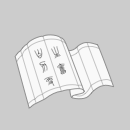
互换性与测量技术基础
全新正版 极速发货
¥ 16.91 4.8折 ¥ 35 全新
库存12件
广东广州
认证卖家担保交易快速发货售后保障
作者贾洁,万一品 编
出版社西安电子科技大学出版社
ISBN9787560671222
出版时间2024-05
装帧平装
开本16开
定价35元
货号1203391794
上书时间2024-11-21
- 最新上架
商品详情
- 品相描述:全新
- 商品描述
-
目录
Chapter 1 Introduction
1.1 Overview
1.2 Basic Concepts
1.2.1 Error and Tolerance
1.2.2 Interchangeability
1.2.3 Standardization and Series of Preferred Numbers
1.2.4 Precision Measurement
1.3 Purpose of This Course
Summary
Exercise 1
Chapter 2 Tolerance and Fit
2.1 Overview
2.2 Basic Terms and Definitions
2.2.1 Size of Hole and Shaft
2.2.2 Deviation and Tolerance
2.2.3 Fit Types and Basic System of Fit
2.3 Standards of Tolerances and Fits
2.3.1 Standard Tolerance Series
……
内容摘要
This book is written to meet the practical needs of the teaching plan for the “Interchangeability and Measurement Technology” course. This book is compiled by combining the achievements of recent education reforms and the construction of national first-class undergraduate courses, adopting the latest national standards, with the feature of closely link theory with practical application.
This book includes 6 chapters. Chapter 1 provides a comprehensive introduction to the basic concepts of interchangeability and standardization. Chapters 2-4 introduce in detail the relevant content of size tolerance, geometric tolerance, and surface roughness from the perspective of accuracy design and basic knowledge reserve of national standards. Chapter 5 starts from error measurement technology and provides a detailed introduction to the basic content of geometric quantity detection technology. Chapter 6 provides a detailed introduction to the accuracy design of typical components for applications.
This book systematically introduces the basic knowledge of interchangeability and measurement technology, highlights basic concepts, provides specific analysis cases, and is equipped with exercise questions, aiming to deepen students’ understanding of the basic knowledge and apply it.
This book is suitable to be used as teaching materials or reference books for students majoring in machinery and instrumentation in higher education institutions, and can also be served as a reference book for mechanical engineering technicians.
相关推荐
— 没有更多了 —






















以下为对购买帮助不大的评价